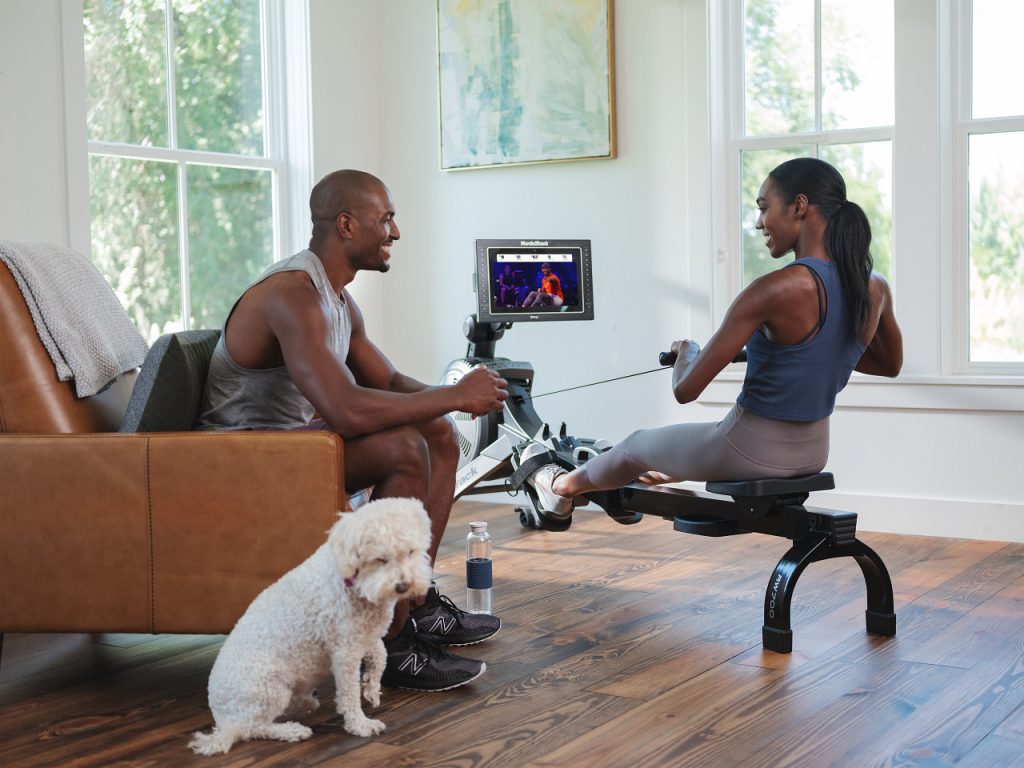Rest is an integral part of fitness, and it is in your best interest to make sure that it has a place in your schedule, especially if you are training intensively. By balancing your training sessions with your rest periods and learning the right habits, you should see an improvement in your performance over the long term.
Rest: Essential in Any Training Programme

Far from being a waste of time, rest periods are essential to performing well and avoiding the effects of overtraining. Top athletes take particular care to plan rest periods to achieve good results. Often, a trainer or coach is responsible for organising an athlete’s programme, which includes recovery times proportional to the training or competition cycle in progress.
Under intense stress, the body needs to recover on several levels:
- Muscular recovery: all athletes are aware that doing intense physical activity creates micro-tears in the muscle fibres. During the rest phases, they are repaired and strengthened, which is how muscle mass gain works.
- Nervous recovery: the brain is also very active during exercise, as it is the source of the impulses that trigger muscle contractions.
- Joint and tendon recovery: tendons and joints need rest periods to avoid pain and damage or injury.
The following is an indication of how long it takes for the body to recover from sustained physical activity:
- Within 30 minutes, heart rate and breathing return to normal, as does blood pressure.
- After 90 minutes of rest, the muscle fibres start to rebuild.
- After 6 hours of rest, the body begins to replenish its energy reserves.
- Within 24 hours, the body stores its energy reserves in the liver, and the concentration of red blood cells in the blood returns to normal.
- It can take 2 to 7 days for the most heavily used muscles to replenish their reserves.
- After about 10 days, the muscle fibres are repaired.
- Nerve recovery can take up to 1 to 3 weeks.
- 1 to 2 months of rest may be necessary after a long and intense event, such as a marathon or ironman.
Real Rest or Active Recovery?

There are several ways to incorporate rest into your training schedule, the 2 main ones being passive rest and active recovery.
Passive Rest H3
During a period of passive recovery, the body is left completely at rest, at which point the athlete concentrates on the pillars of good health to get back into shape as quickly as possible:
- Rest: longer sleeping hours, regular bedtimes, naps if necessary, etc.
- Nutrition: sufficient protein, fibre and carbohydrate intake, as well as vitamins and trace elements to help the body replenish its reserves. The intake of stimulants, such as tea or coffee, is generally not recommended. Good hydration also facilitates recovery.
- Gentle mobilisation of muscles, tendons and joints with stretching, massage, etc. Activities such as yoga or meditation can help to restore nervous balance.
Active Recovery
With active recovery, training is not entirely interrupted but is adapted with calmer or different disciplines: hiking, running, swimming, etc. During this active break, performance is not the main focus. Instead, it is about enjoying yourself and recharging your batteries. Doing physical activity during a recovery period helps you stay flexible and strong while stimulating your blood circulation. Active rest is accompanied by the same lifestyle recommendations as passive rest regarding sleep and nutrition.
Good Practices for Managing Rest Periods

How you organise rest periods in your training schedule depends mainly on the type of activity you do and the frequency of your sessions. Think of recovery in cycles and plan several strategies:
- Immediate recovery after a session or a race.
- Recovery between sessions in the same week.
- Weekly recovery, monthly recovery or slightly longer.
- Recovery after a training cycle ending in a competition.
- At least one significant period per year where you take a rest period of several weeks.
Check out our Health & Fitness page for more advice.
